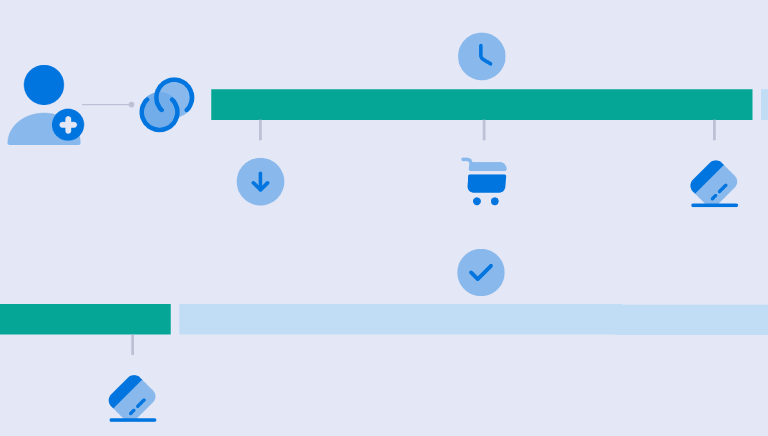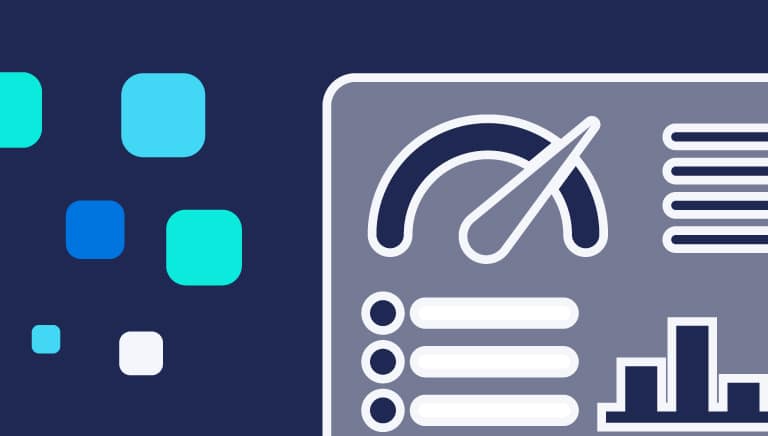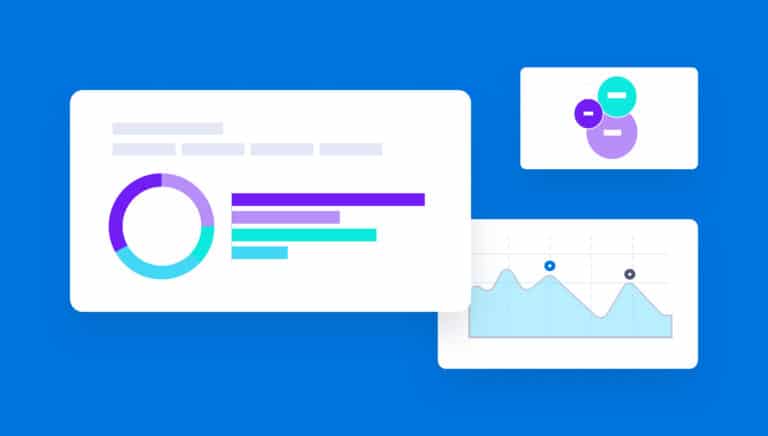What is attribution?
Attribution is the process of assigning credit to touchpoints along the customer journey to determine how they influence a user’s conversion or action within a mobile app. Marketers use attribution data to understand user behavior, optimize campaign strategies, and make informed, data-driven decisions about ad spend and resource allocation.
In the context of mobile marketing, attribution is essential for figuring out which ads, social media posts, quick response (QR) codes, or other digital marketing channels lead to app installs and in-app engagement.
Types of attribution
There are several types of attribution — and which you employ will depend on your specific marketing goals, the platforms you use, and the touchpoints you want to analyze. Each type of attribution provides different insights and advantages, helping to fine-tune acquisition and engagement strategies and maximize return on investment (ROI). Here’s a breakdown of the main types of attribution:
Web attribution
Web attribution involves tracking and analyzing data about how users engage with a website. Web attribution analytics tools track web traffic and metrics related to user behavior, like conversion rates, click-through rates (CTRs), bounce rates, and other data on how users engage with website elements and campaigns aimed at driving web traffic.
Marketers use web attribution insights to understand user behavior and preferences as well as to determine the effectiveness of their content and campaigns. For example, by analyzing bounce rates on specific landing pages, marketers can identify dropoff points on the path to conversion and take action to redesign those pages or adjust the call to action (CTA) to better align with user expectations.
App attribution
App attribution, or mobile attribution, is the process of tracking how users interact with mobile apps to determine which marketing channels drive app installs and engagement.
Most marketers rely on mobile analytics tools and mobile measurement partners (MMPs) like Branch for app attribution. These tools use software development kits (SDKs) to track app-related metrics such as installs, user engagement, and other in-app interactions. They are crucial for marketers to understand how user acquisition and retention campaigns perform and attribute these outcomes back to specific marketing channels or touchpoints.
Cross-channel attribution
When marketers use multiple marketing channels to reach customers, cross-channel attribution provides a more complete view of the user’s journey, allowing them to understand how various channels work together to drive conversions.
Cross-channel attribution uses different attribution models, including first-touch, last-touch, and multi-touch attribution. For mobile marketers specifically, there’s also install-touch attribution. For more on the difference between install-touch and last-touch, check out our blog: “What’s the Difference? Last-touch vs. Install-touch Attribution.”
Cross-channel attribution tools work by allocating credit to multiple marketing channels depending on how each influences user behavior. This method considers user behavior across different devices — such as tablets, mobile phones, and desktop environments — to accurately attribute conversions. It considers different platforms, including social media, web, email marketing, and apps, to determine which is most effective at achieving conversions. This information helps marketers optimize their marketing strategies and budgets to maximize revenue.
Full-funnel attribution
Full-funnel attribution is a more comprehensive approach that takes a broader look at the entire customer journey.
Unlike other methods that focus on specific touchpoints or channels, full-funnel attribution tracks user engagement across the entire marketing funnel, from awareness to conversion. It aims to attribute the influence of each interaction that a customer encounters along their path to conversion, providing a more holistic view of marketing performance. Full-funnel attribution insights are useful for determining the effectiveness of marketing efforts at every stage of the customer journey and, in turn, facilitating more strategic, data-driven decision-making.
Types of marketing attribution models
Attribution models vary in how they determine which marketing touchpoint gets credit for a conversion.
Last-touch attribution modeling, for example, credits conversions to the very last touchpoint a user made before converting. If a user clicked through an ad to download and install an app, the ad would receive credit for the conversion. In contrast, first-touch attribution gives full credit for a conversion to the first touchpoint the user interacted with. If a user clicked on an ad to install an app as the very first interaction with a marketing campaign and then eventually did download the app, the ad would receive credit for the conversion.
Multi-touch attribution models, alternatively, spread credit across multiple touchpoints along the customer journey. This model lets marketers assign credit based on predetermined rules or weighting strategies. Some methods include linear distribution attribution (where every touchpoint receives the same weight); time-decay attribution (where more recent touchpoints receive more credit); U-shaped attribution (which applies the most credit to the first and last touchpoint while applying the least credit to touchpoints encountered in the middle); and W-shaped attribution (where the first and last touchpoints receive more credit). By distributing credit, marketers can understand the relative impact of each touchpoint. It’s worth mentioning that in modern marketing, privacy policies are forcing companies away from deterministic last-touch measurement, and a variety of alternatives — SKAdNetwork (SKAN), Google Privacy Sandbox, modeled SAN outputs — are emerging. Some companies are finding new approaches, like combining traditionally separate measurement methods or “triangulating” the results from different measurement methods, including attribution data and media mix modeling (MMM). Learn more in our “How To Combine Attribution Data With Media Mix Modeling” blog.
Mobile measurement partners (MMPs)
MMPs are third-party platforms that specialize in mobile app attribution. They provide the tools and services needed to track app downloads and installs, engagement, and user behavior.They give unbiased insights into campaign performance on paid channels. Check out this blog to learn more about MMPs.
Attribution challenges
The variety of attribution models, user touchpoints, channels, and platforms make attribution challenging. Common obstacles include data accuracy, cross-device tracking, and compliance with privacy regulations that influence how brands collect and use consumer data, such as the General Data Protection Regulation (GDPR) and the California Consumer Privacy Act (CCPA). Learn more about how marketers are addressing these challenges in our “Future of Measurement” blog.
Conclusion
Understanding attribution is critical for marketers to gauge the effectiveness of marketing efforts and allocate their resources efficiently.
With technology and consumer behavior evolving at a rapid clip, it’s important to stay up to date on the latest trends and developments in attribution. Marketers who stay ahead of the curve can gain a competitive advantage and maximize their ROI and return on advertising spend (ROAS).
FAQs
How does last-touch attribution work? What are its advantages and limitations compared to other attribution models?
Last-touch attribution credits conversions to the last touchpoint a user made before converting. This model helps marketers understand the final marketing effort that drives conversion. However, it does not consider the influence of other efforts along the customer journey that helped contribute to the conversion.
How does multi-touch attribution offer insights into the customer journey?
Multi-touch attribution considers a wide range of touchpoints along the customer journey and gives each one credit. This model lets marketers understand how every touchpoint contributed to the user’s eventual conversion. It requires a stable concept of identity over time, which is problematic in today’s age of privacy.
What are the key differences between first-touch and last-touch attribution models, and when is each model most appropriate to use?
Last-touch attribution credits conversions to the last touch a user made before a conversion, and first-touch attribution gives full credit for a conversion to the initial touchpoint experienced by the user. It’s a good idea to align the attribution model to your desired objectives. For example, first-touch attribution can be useful when you are trying to convert new users. Last-touch attribution is a good way to measure success with users who are already aware of your brand. In mobile marketing, some marketers use both at once to gain broader insights into user behavior across the spectrum.
How does linear attribution help with understanding user behavior?
Linear attribution gives equal credit to every touchpoint a user encountered before converting. This model helps marketers understand the combination of marketing efforts that had the most impact when used together.
How does time-decay attribution prioritize touchpoints closer to the conversion event?
Time-decay attribution accomplishes this by allocating greater attribution credit to touchpoints that are closer to conversion. Using this model helps marketers understand how effective different touchpoints are along the entire customer journey.
Do certain industries or businesses benefit most from using specific attribution models?
Yes. Depending on their marketing strategy, unique customer journey, sales cycles, and other variables, certain industries or businesses may benefit more from certain attribution models. First-touch attribution can be helpful for marketers that are launching new products or building brand awareness. In contrast, last-touch attribution can be especially beneficial for industries that are focused on conversion-driven campaigns, such as subscription services, e-commerce sites, and businesses in the travel and hospitality industry. It’s important that marketers consider their strategy and objectives when choosing an attribution model.
How do marketers determine which attribution model is the right attribution model for their campaigns and business objectives?
It starts with gaining insights into the complete customer journey and having clearly defined objectives, which may influence which model is best aligned with a business’s strategy. Marketers should also consider which industry they operate in and explore which attribution models their competitors are using. For example, if a company is working to increase its online sales, last-touch attribution may help it identify which marketing touchpoint resulted in the purchase. If marketers are working to increase awareness of a product or service, first-touch attribution will help them recognize which efforts generated initial user interest. Whichever attribution model a marketer chooses, it’s important to test it thoroughly to ensure it is yielding data insights that are meaningful and actionable.
What challenges do marketers face when implementing and interpreting attribution data from different models?
First, different attribution models each have their own limitations based on the way they are designed, including biased attribution. For example, last-touch attribution credits conversions to the final user touchpoint, which ignores the influence previous interactions may have had. In addition to each model having its own built-in bias, sometimes the data collected is incomplete or inaccurate, which can lead to skewed attribution. Other models, such as multi-touch attribution, result in a complex body of data that can be challenging to interpret. Whatever model a mobile marketer chooses, it’s important to understand its limitations.
How has web attribution evolved with the rise of cross-device and cross-platform interactions?
As cross-device and cross-platform user interactions have increased, technology has adapted. Today’s attribution models use advanced data collection techniques, machine learning, and other emerging technologies to create a clearer picture of user behavior across devices and platforms. This enables marketers to gain clear insights from data so they can optimize their marketing efforts in an increasingly dynamic environment.
What are some emerging trends in web attribution methods and technologies?
Attribution modeling technology is evolving to meet the needs of marketers who want to capture increasingly complex user interactions, such as cross-device and cross-platform use. New and upcoming models use real-time machine learning and predictive modeling to capture a clear picture of the user journey for marketers. Privacy is becoming more important in the industry, too, so attribution modeling is also evolving to enhance the way it protects sensitive user data. Learn more about the future of measurement.
How might advancements in AI and machine learning impact the future of web attribution modeling and analysis?
AI and machine learning are helping to shape the attribution models of the future. For example, multidevice tracking technology can capture user data across mobile phones, tablets, and computers. Newer unified data collection tracking methods are also able to capture data across different platforms, such as mobile apps, web, and offline use, to gain a more complete picture of user behavior. Attribution models are becoming more advanced as well, and some can attribute credit to a range of touchpoints along the user journey, which helps marketers understand which efforts are moving the needle on engagement and sales. On the data management side, AI and machine learning are helping to protect the privacy of users while at the same time helping marketers more accurately pinpoint which elements of their marketing campaigns were most successful.
What insights can businesses gain from web attribution?
Web attribution helps marketers understand the effectiveness of their marketing efforts so they can optimize their marketing strategies and budgets.
What role do MMPs play in optimizing user acquisition strategies for mobile apps?
MMPs provide the expertise, tools, and services marketers need to implement mobile app attribution models so they can gain insights into user behavior and data on how successful their marketing strategies are.



